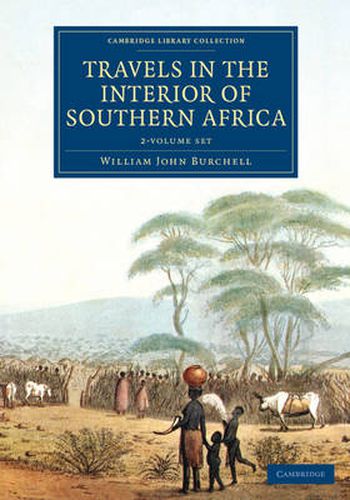Readings Newsletter
Become a Readings Member to make your shopping experience even easier.
Sign in or sign up for free!
You’re not far away from qualifying for FREE standard shipping within Australia
You’ve qualified for FREE standard shipping within Australia
The cart is loading…






William John Burchell (1781-1863) is still admired for this outstanding two-volume geography of South Africa, published in 1822-4 and later taken on Darwin’s Beagle voyage. It is based on his journal of the first year of a 4,500-mile expedition into southern Africa from 1811 to 1815, while ‘botanist to the Cape Colony’. Volume 1 particularly focuses on landscapes, and flora and fauna, often giving their indigenous names, while Volume 2 is more ethnographical. Burchell emphasises at several points in his account that his observations are ‘most impartial and unprejudiced’, intended to present a true picture of southern Africa’s ‘Aboriginal Inhabitants’. He also claims that unlike many travelogues, his contains no ‘indelicacies … offensive to decency’. He returned to England with 500 scientific and ethnographical drawings, many of them used as illustrations in the book, and about 63,000 natural history specimens including 120 animal skins and 265 species of bird.
$9.00 standard shipping within Australia
FREE standard shipping within Australia for orders over $100.00
Express & International shipping calculated at checkout
William John Burchell (1781-1863) is still admired for this outstanding two-volume geography of South Africa, published in 1822-4 and later taken on Darwin’s Beagle voyage. It is based on his journal of the first year of a 4,500-mile expedition into southern Africa from 1811 to 1815, while ‘botanist to the Cape Colony’. Volume 1 particularly focuses on landscapes, and flora and fauna, often giving their indigenous names, while Volume 2 is more ethnographical. Burchell emphasises at several points in his account that his observations are ‘most impartial and unprejudiced’, intended to present a true picture of southern Africa’s ‘Aboriginal Inhabitants’. He also claims that unlike many travelogues, his contains no ‘indelicacies … offensive to decency’. He returned to England with 500 scientific and ethnographical drawings, many of them used as illustrations in the book, and about 63,000 natural history specimens including 120 animal skins and 265 species of bird.